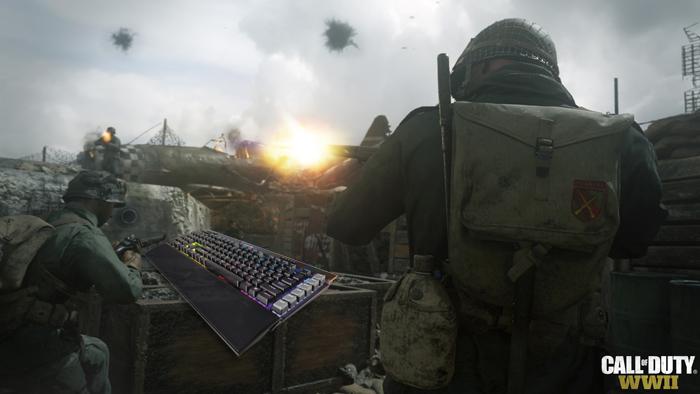Image quality settings and benchmark system
Image quality settings and benchmark system
The game is using an in-house engine developed by Sledgehammer Games based on the IW engine (DirectX 11). For this game, we use an internal time run with the best image quality settings, the highest possible quality mode. We will test a good number of cards in this D3D11 compatible title performance wise. Games typically should be able to run in the 40 FPS range combined with your monitor resolution. From there onwards you can enable/disable things if you need more performance or demand even better game rendering quality. The game allows you to tweak many graphics settings but has your typical settings ranging from the lowest to the best (Highest/Extra) image quality settings.
We use the settings as shown in the video below:
Available Settings
- Display adapter: Self-explanatory
- Display mode: Windowed; Fullscreen; Windowed (no border)
- Monitor: Self-explanatory
- Screen refresh rate: Self-explanatory
- Sync every frame: Off/On
- Maximum FPS: 30fps -> 250fps in increments of 5fps
- Aspect ratio: Auto; Standard 4:3; Wide 16:10; Wide 16:9; Ultrawide 21:9
- FoV: 65 -> 90 in increments of 1
- Resolution: Self-explanatory
- Rendering resolution: 10%; 25%; 50%; 75%; Native; 125%; 150%; 175%; 200%; 225%; 250%; 275%; 300%; 325%; 350%; 375%; 400%
- Pre-T2X resolution: 50%; 75%; Native
- Post-process anti-aliasing: Off; FXAA; SMAA 1x; SMAA T2x; Filmic SMAA 1x; Filmic SMAA T2x
- Texture resolution: Low; Normal; High; Extra
- Normal map resolution: Low; Normal; High; Extra
- Specular map resolution: Low; Normal; High; Extra
- Fill remaining memory: Off/On
- Shader preload: Off/On
- Anisotropic filtering: Low; Normal; High
- Shadows: Off/On
- Shadow map resolution: Normal; High; Extra
- Sun shadow bit depth: Normal; High
- Screen-space shadows: Off; Auto on; Always on
- Screen-space reflections: Off/On
- Cache sun shadow maps: Off/On
- Depth of field: Off; Low; Normal; High
- Screen-space ambient occlusion: Off; Hemi AO; HBAO+; GTAO low; GTAO high
- Medium distant ambient occlusion: Off/On
- Subsurface scattering: Off/On
The graphics cards tested
In this article we'll make use of the following cards at the best PC experience, the quality mode as shown above with VSYNC OFF. The graphics cards used in this test:
- Geforce GTX 1050 Ti (4GB)
- GeForce GTX 1060 (6GB)
- GeForce GTX 1070
- GeForce GTX 1070 Ti
- GeForce GTX 1080
- GeForce GTX 1080 Ti
- GeForce GTX 970
- GeForce GTX 980
- GeForce GTX 980 Ti
- NVIDIA Titan X (Pascal)
- Radeon R9 390X
- Radeon R9 Fury
- Radeon R9 Fury X
- Radeon R9 Nano
- Radeon RX 470 (8GB)
- Radeon RX 480 (8GB)
- Radeon RX 570 (4GB)
- Radeon RX 580 (8GB)
- Radeon RX Vega 56
- Radeon RX Vega 64
System specifications & drivers
Our test system is based on the eight-core Intel Core i7-5960X Extreme Edition with Haswell-E based setup on the X99 chipset platform. This setup is running tweaked at 4.20 GHz. Next, to that, we have energy saving functions disabled for this motherboard and processor (to ensure consistent benchmark results). We use Windows 10 all patched up. Each card runs on the same PC with the same operating system clone.
The drivers are:
- GeForce cards use the latest 388.13 WHQL drivers (download).
- Radeon graphics cards we used the latest AMD Radeon Crimson 17.11.1 Driver (download).


